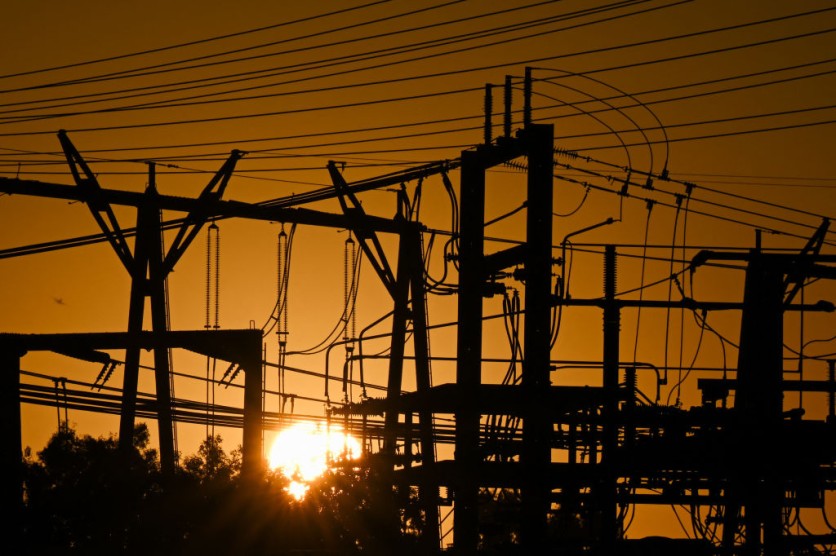The current electrical grid in the United States is ill-prepared to meet the growing demands for renewable energy sources and faces mounting challenges posed by extreme weather events and cybersecurity threats.

(Photo : PATRICK T. FALLON/AFP via Getty Images)
The sun sets behind electric power lines as the California Independent System Operator announced a statewide electricity Flex Alert urging conservation to avoid blackouts in Redondo Beach, California on August 31, 2022.
Facing Challenges Amid Rising Demand for Renewable Energy
Energy security organization SAFE Grid Security Project has identified a surge in problems like power outages and supply deficits, indicating a growing concern.
Engadget reported that SAFE emphasizes that without substantial revisions to both policy and infrastructure, these challenges are expected to intensify in the future.
SAFE draws attention to notable incidents such as the devastating power crisis in Texas in 2021, which left millions without electricity during a winter storm, and a substation shooting in North Carolina in 2022, resulting in outages for over 40,000 individuals.
What were once considered rare occurrences are now regrettably becoming more commonplace.
Additionally, the report underscores the threat of sophisticated cyberattacks, as demonstrated by the historic breach of Ukraine's power grid in 2015, serving as a potential challenge that the US grid may confront.
The escalating frequency of extreme weather events, cyber espionage, and domestic acts of terror has shifted sporadic power disruptions into distressingly recurrent incidents within cities across the United States.
Thomas Coleman, the Executive Director of SAFE's Grid Security Project stated these are combined with the increasing burden on aging infrastructure.
Failing to Adopt
As we undergo a swift shift away from fossil fuels, the pressure on the electrical grid is set to intensify. Electric vehicles have witnessed a remarkable surge in adoption.
Yet, the existing infrastructure is struggling to efficiently channel energy from renewable sources such as wind and solar to densely populated regions.
This lack of capacity means that the current grid may struggle to consistently meet the escalating demands of energy generation and transmission.
SAFE asserts that the infrastructure, which has evolved from that relied upon by our great-grandparents, is progressively ill-suited to underpin today's modern economy. In simpler terms, the grid is in dire need of rapid and comprehensive updates.
Also Read : New 'Snow-Free Solar' Tech Aims to Keep Solar Panels Free of Snow Buildup, Functioning Through Winter Months
Effectively managing the transition to sustainable energy, minimizing disruptions, enhancing security, and ensuring affordable access to clean energy for households and businesses are crucial steps for the successful electrification of our economy and transportation systems.
Achieving this necessitates a well-coordinated effort between public regulators and private sector providers. Abundant, affordable, clean, and dependable energy is the key to the United States' ability to maintain its status as the world's leading economy, as per CEO Robbie Diamond on their official press release.
However, current federal and state policies do not adequately address the known risks to the nation's electrical grid. To overcome this impasse, it is imperative for the government and industry to initiate a new dialogue grounded in an honest assessment of the challenges and prospects ahead.
Related Article : Biden Administration Unveils Plan to Build a Commercial Nuclear Fusion Facility Within 10 Years

ⓒ 2025 TECHTIMES.com All rights reserved. Do not reproduce without permission.




